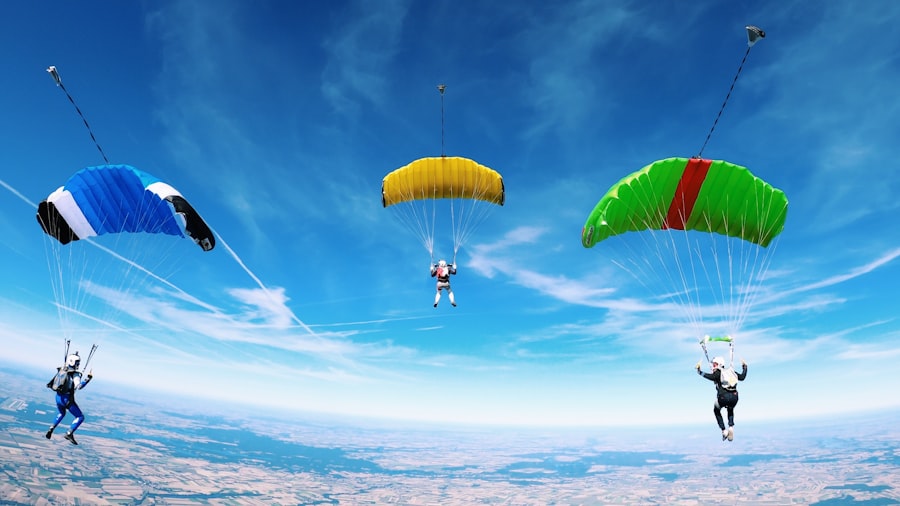Download links
How to install Lotterysambad Extreme Sports: Pushing the Limits APK?
1. Tap the downloaded Lotterysambad Extreme Sports: Pushing the Limits APK file.
2. Touch install.
3. Follow the steps on the screen.
Description
Extreme sports have captivated the hearts and minds of adventurers and thrill-seekers alike, offering an exhilarating escape from the mundane. These activities, which often involve high levels of risk and adrenaline, provide participants with a unique sense of freedom and accomplishment. Whether it’s the rush of free-falling from a plane during skydiving or the heart-pounding experience of navigating treacherous mountain trails on a mountain bike, extreme sports deliver an unparalleled thrill that few other activities can match.
The sheer intensity of these experiences often leads individuals to push their limits, seeking out new challenges and adventures that test their physical and mental boundaries. The allure of extreme sports lies not only in the adrenaline but also in the sense of community that often accompanies these activities. Enthusiasts frequently gather in groups, sharing tips, experiences, and camaraderie that enhance the overall experience.
This social aspect fosters a supportive environment where individuals can encourage one another to take on new challenges, whether it’s attempting a difficult rock climb or participating in a high-stakes race. The thrill of extreme sports is not just about the individual experience; it is also about the connections formed with like-minded individuals who share a passion for adventure and exploration.
Key Takeaways
- Extreme sports provide an adrenaline rush and a sense of excitement for participants
- Participants face risks such as injury, death, and legal issues
- Extreme sports have evolved from niche activities to mainstream attractions
- Mental and physical preparation are crucial for participating in extreme sports
- Extreme sports can have long-term impacts on the body, including injuries and wear and tear
- The future of extreme sports may involve increased safety measures and technological advancements
The Risks and Dangers Involved
The Physical Risks
Certain extreme sports, such as base jumping, which involves leaping from fixed objects with a parachute, are notorious for their high fatality rates. Similarly, extreme skiing on unmarked slopes can expose athletes to avalanches and other life-threatening conditions. These risks are not merely theoretical; they are a harsh reality that every extreme sports enthusiast must confront.
The Psychological Aspect of Risk
Many individuals are drawn to extreme sports precisely because of the danger involved, as it heightens their sense of awareness and presence in the moment. However, this attraction can lead to reckless behavior if not tempered with caution and respect for safety protocols. The thrill of pushing boundaries can sometimes overshadow the importance of preparation and risk assessment, resulting in accidents that could have been avoided.
Understanding the Risks is Crucial
Therefore, understanding the risks associated with extreme sports is crucial for anyone looking to engage in these high-octane activities. By acknowledging and respecting these risks, extreme sports enthusiasts can take necessary precautions to minimize the dangers and ensure a safer, more enjoyable experience.
The Evolution of Extreme Sports

The landscape of extreme sports has undergone significant transformation over the years, evolving from niche activities into mainstream phenomena. In the early days, extreme sports were often relegated to underground subcultures, with participants seeking out uncharted territories and pushing the limits of what was possible. Skateboarding, snowboarding, and BMX biking were among the first to gain traction, attracting a dedicated following that celebrated individuality and self-expression.
As these sports gained popularity, they began to attract sponsorships and media attention, leading to their eventual inclusion in major sporting events. Today, extreme sports encompass a wide array of activities that continue to evolve with advancements in technology and equipment. Innovations such as improved safety gear, enhanced training methods, and cutting-edge performance analytics have transformed how athletes approach their chosen sports.
Additionally, the rise of social media has played a pivotal role in popularizing extreme sports, allowing athletes to share their experiences and connect with audiences worldwide. This digital age has not only expanded the reach of extreme sports but has also inspired a new generation of athletes eager to explore the limits of human potential.
The Mental and Physical Preparation Required
| Preparation Aspect | Description |
|---|---|
| Mental Preparation | Includes visualization, goal setting, and mental toughness training. |
| Physical Preparation | Involves strength training, cardiovascular conditioning, and flexibility exercises. |
| Nutritional Preparation | Focuses on balanced diet, hydration, and proper supplementation. |
| Rest and Recovery | Importance of adequate sleep, rest days, and recovery techniques. |
Engaging in extreme sports demands rigorous mental and physical preparation. Athletes must cultivate a strong mindset that allows them to confront fear and uncertainty head-on. Mental resilience is crucial for navigating high-pressure situations where split-second decisions can mean the difference between success and failure.
Visualization techniques, meditation, and mindfulness practices are often employed by extreme sports enthusiasts to enhance focus and build confidence before tackling challenging feats. Physical preparation is equally important, as extreme sports require peak physical condition to endure the demands placed on the body. Athletes often engage in specialized training regimens tailored to their specific sport, focusing on strength, endurance, flexibility, and agility.
For instance, rock climbers may incorporate weight training and cardiovascular exercises into their routines to build the necessary strength for scaling vertical cliffs. Additionally, proper nutrition plays a vital role in ensuring that athletes maintain optimal energy levels during intense activities. The combination of mental fortitude and physical readiness is essential for anyone looking to excel in extreme sports.
The Impact of Extreme Sports on the Body
The physical toll of extreme sports can be both profound and multifaceted. While these activities can lead to improved fitness levels and enhanced athletic performance, they also carry a risk of injury that can have lasting effects on the body. Common injuries associated with extreme sports include fractures, sprains, concussions, and overuse injuries that can result from repetitive motions.
For instance, surfers may experience shoulder injuries due to paddling against strong waves, while snowboarders are prone to wrist injuries from falls. Despite these risks, many athletes find that the benefits of participating in extreme sports far outweigh the potential downsides. Engaging in these activities can lead to increased cardiovascular health, improved muscle tone, and enhanced coordination.
Furthermore, the adrenaline rush associated with extreme sports can trigger the release of endorphins, contributing to an overall sense of well-being and happiness. However, it is crucial for athletes to listen to their bodies and prioritize recovery to mitigate the long-term effects of wear and tear associated with high-impact activities.
The Future of Extreme Sports

As society continues to evolve, so too does the world of extreme sports. The future promises exciting developments driven by technological advancements and changing cultural attitudes toward adventure and risk-taking. One notable trend is the increasing integration of virtual reality (VR) into extreme sports training.
Athletes can now simulate high-risk scenarios in controlled environments, allowing them to practice techniques without exposing themselves to real-world dangers. This innovative approach not only enhances safety but also provides valuable insights into performance optimization. Moreover, as environmental awareness grows, there is a shift toward sustainable practices within extreme sports communities.
Athletes are becoming more conscious of their impact on natural landscapes and ecosystems, leading to initiatives aimed at preserving these environments for future generations. This commitment to sustainability may influence how extreme sports are practiced and promoted moving forward. As new disciplines emerge and existing ones evolve, the future of extreme sports holds endless possibilities for those willing to embrace adventure while prioritizing safety and environmental stewardship.
Physical education plays a crucial role in keeping our bodies healthy and fit, which is essential for participating in extreme sports. It’s important to understand the importance of physical education in maintaining overall well-being.
FAQs
What are extreme sports?
Extreme sports are activities that involve a high level of risk and often require physical exertion and specialized equipment. These sports typically take place in challenging environments and can include activities such as skydiving, rock climbing, snowboarding, and base jumping.
What are some popular extreme sports?
Some popular extreme sports include surfing, skateboarding, mountain biking, snowboarding, rock climbing, skydiving, base jumping, and whitewater rafting. These sports often attract thrill-seekers and adrenaline junkies looking for an intense and exhilarating experience.
What are the risks associated with extreme sports?
Extreme sports carry a higher risk of injury or even death compared to traditional sports. Participants may face dangers such as falls, collisions, and environmental hazards. It is important for individuals to receive proper training and use appropriate safety gear when participating in extreme sports.
How can someone get involved in extreme sports?
Individuals interested in participating in extreme sports can seek out specialized training programs, join local clubs or organizations, and connect with experienced athletes in the community. It is important to start with proper instruction and gradually build skills and experience in the chosen sport.
What are the benefits of participating in extreme sports?
Participating in extreme sports can provide individuals with a sense of accomplishment, an adrenaline rush, and an opportunity to push personal limits. These sports can also promote physical fitness, mental resilience, and a strong sense of community among fellow enthusiasts.





